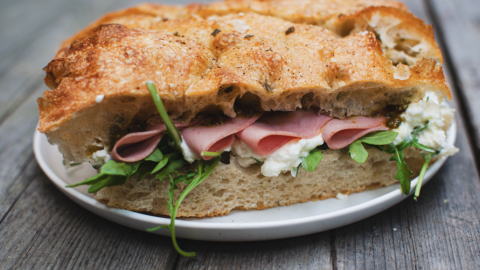From Sub to Club
The humble sandwich, in one form or another, has held a place in the homes of almost every culture on the planet for hundreds of years. From the simple North American cheese sandwich to the ever more nuanced and multi-cultural bánh mì, sandwiches form a central part of the food scene in many countries. Despite often seen as a more pedestrian food because of its popularity in many places as a quick and portable meal while on the go, the sandwich has proven itself time and again as capable of being elevated, gourmet fare.
So where did the sandwich come from? Who first put two pieces of bread together and called it a “sandwich”? For that, we owe our thanks to one John Montagu, Fourth Earl of Sandwich, an 18th-century English aristocrat, who upon his distaste for leaving his work desk or gambling table to eat, asked his valet to whip him up salt beef between two slices of toasted buttered bread. In this way, he could continue to gamble or work, without having to dirty his hands to nourish himself.
But this little bit of history merely gives us the origin of the name, whereas the history of some form of bread eaten with cheeses, meats, vegetables or some combination of them all dates much further back. Arguably the origin of bread itself a few thousand years ago led directly to its consumption with other foodstuffs available at the time. One of the oldest references to something resembling a sandwich is with the Jewish Rabbi and Scholar Hillel the Elder, who was noted in Jewish texts from the first century B.C., as having made sandwiches of Passover lamb, bitter herbs and unleavened matzoh bread. This Jewish tradition continues today during the Seder dinner, where participants create their own matzoh sandwiches in a way to honour him.
Globally, sandwich-adjacent meals appear everywhere: Greeks and Turks would stuff their pitas with meat, cheese and vegetables as part of their traditional mezes. Romans in medieval times had trenchers, which were stale pieces of bread used to hold food and soak up sauces of a meal. And even before that, there were flatbreads such as Ethiopia’s injera, a fermented flatbread used as a tool to pick up meats, sauces and stews at meals. Lavash, a traditional bread of the Armenian people, traces its origins to over 3000 years ago and is traditionally eaten rolled around cheeses, greens and meats. It also serves a traditional role in weddings to bring fertility and prosperity and has been recognized by UNESCO as an Intangible Cultural Heritage of Humanity,* underscoring just how important the sandwich is to modern human cultures.
In every modern culture today, there is something similar to a sandwich. Having recently visited Spain, Italy and France, I can tell you there are so many regional varieties of sandwiches in just those three countries that it might take a lifetime to try them all. With the wide variety of cultures and cuisine represented in local Vancouver Island restaurants, you don't need to travel far to take a bite.







